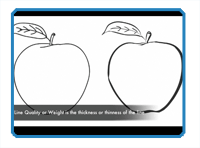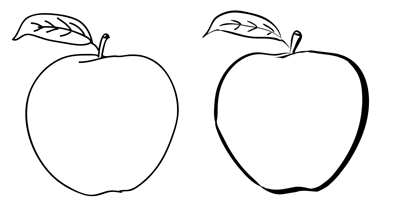
By Matt Fussell
In terms of art, line is defined as a moving dot. Line is perhaps the most basic of the seven elements of art. Line is also a fundamental part of drawing. Understanding how to use line to it's fullest potential is absolutely essential to any artist's success.
So, that being said, let's take a look at a few of the ways that you can use line to it's fullest potential.
Line most commonly defines the edges of an object. When line is used in this way, the lines are called contour lines.
Drawing with one basic line that does not change in width is monotonous and boring. In order to make your contour line drawing more interesting, you should add variety to the line by varying the line quality.
Line quality is also called line weight and simply put, refers to the thickness or thinness of the line. Lines may become wider or thicker in areas where the object itself is thicker. Or lines may become thicker to help indicate a light source. Lines in areas of shadow may be thicker. By varying line quality (weight) you add variety to your work. Take a look at the apples below. Notice how varying the line quality in the drawing on the right, makes the apple appear to have form.

Cross contour lines are lines that define the form of the object even further. Cross contour lines may flow over the contours of the object. A good way to think of this is to imagine taking your finger and running it over the surface of an object. Your finger may go up or down depending on the surface of the object. If you were to draw these lines, these lines may change direction depending on the ends and outs of the surface of the object. Cross contour lines can be drawn horizontally or vertically over the surface of the object. When deciding on which direction to make brush strokes, add value, or material, consider the cross contour lines that may "exist" on the surface of the object.
The following video illustrates the use of line quality and cross contour lines in visual art...
Here are some more art lessons that you may like...